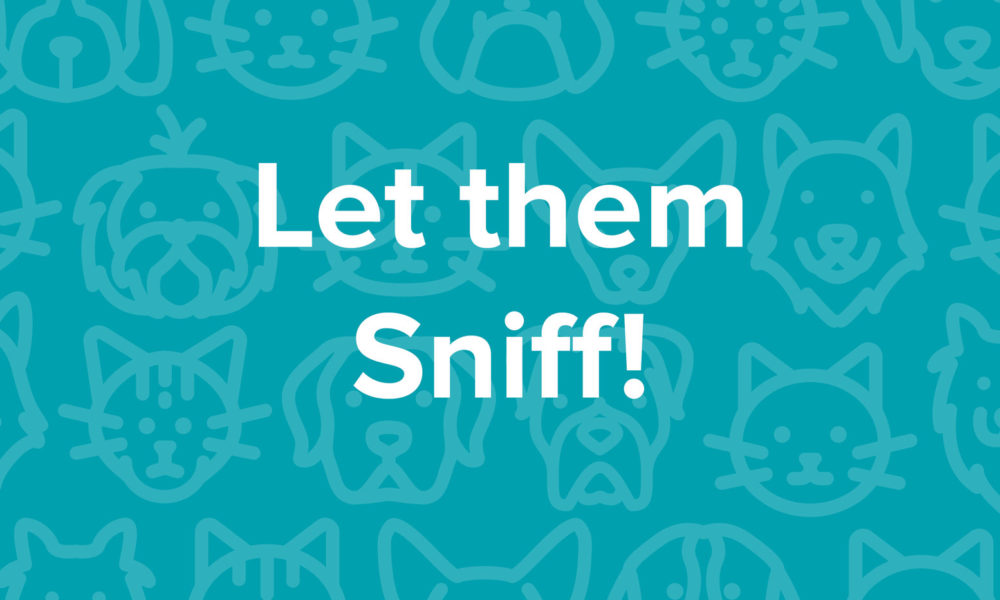Let them Sniff!

Dog training is important, but just as important is letting your dog be a dog. In other words, just let them sniff!
Dogs have millions more olfactory (that’s a fancy word for smell) receptors than humans. In fact, dogs have approximately 300 million olfactory receptors and humans only have about 6 million! Dogs also have other differences that give them an advantage in their sniffing abilities. They have a larger ‘smelling section’ in their brains, about 40 times larger than in humans. Dogs also have longer snouts and an additional organ for smelling called the vemoronasal organ in their nasal cavity that helps them to differentiate between specific types of smells. This means that dogs really do ‘see’ the world through their sense of smell. Smelling provides a huge amount of information for dogs, including what other dogs have been there, their sex, and reproductive status. These differences are why some dogs can be trained to sniff out drugs, certain chemicals, and even cancer cells!
Sniffing provides a lot of benefits for dogs – both physical and mental. In training classes, people often say, ‘My dog isn’t food motivated,’ but this can be a sign that the dog is stressed. This stress causes a release of adrenaline, which increases the breathing and heart rates, and increases blood flow to the muscles and away from the digestive tract, so that lack of interest in food may be caused by stress.
Giving your dog time to sniff helps to calm them. It lowers their heart rate and stops the release of adrenaline, so they are less stressed and ready to engage in their training – and their food again!
Sniffing can also have mental benefits for your dog. Most dogs live their lives at the whims of their humans. They eat when they are fed, they go out when they are allowed, and they are told not to do certain things (like chewing their human’s shoes!).
Sniffing gives dogs a sense of control over their own environment and the freedom to make choices which can improve their self-confidence and decrease stress. It takes brain power and effort to sort through and identify all the different elements in any one smell. This can keep your dog engaged and help delay mental decline as your dog gets older.
A study done in 2019 compared dogs practicing activities where they used their noses with dogs who practiced physical exercises to keep in step with their owners (heeling) found that the dogs who had to use their noses did better the other group on an objective test designed to measure optimism in dogs.*
So, what can you do to support your dog’s sniffing needs?
- Take a designated ‘sniff walk.’ Make some walks with your dog about only sniffing. Take your dog to a different location than your usual walks so he can explore some new scents. On these walks, allow your dog to sniff a spot for as long as they want without making then move along. This can help those dogs that are especially energetic to release some of that energy by using all their senses. It can also be helpful for dogs that are anxious and don’t do well in locations with a lot of other people and dogs like a dog park.
- Formal scent work training. This may not be for every dog but many dogs, especially working dogs who need a purpose, love the training. It can also help you bond with your dog as you work together as a team.
- Scent work at home. You can play ‘find it’ games with your dog by hiding treats and having your dog find them. There are scent work toys and puzzles you can purchase but, you can also hide treats in things you already have around the house like under a plastic container, a favorite toy, or in a shoe box (don’t forget to remove the shoes first!).
Hopefully these tips will help your dog stay relaxed and happy!
